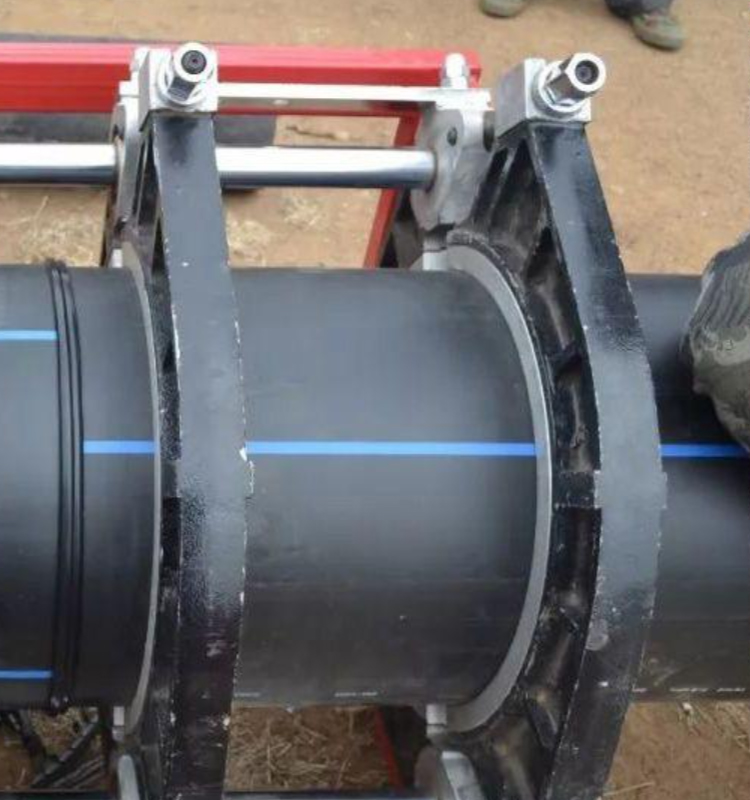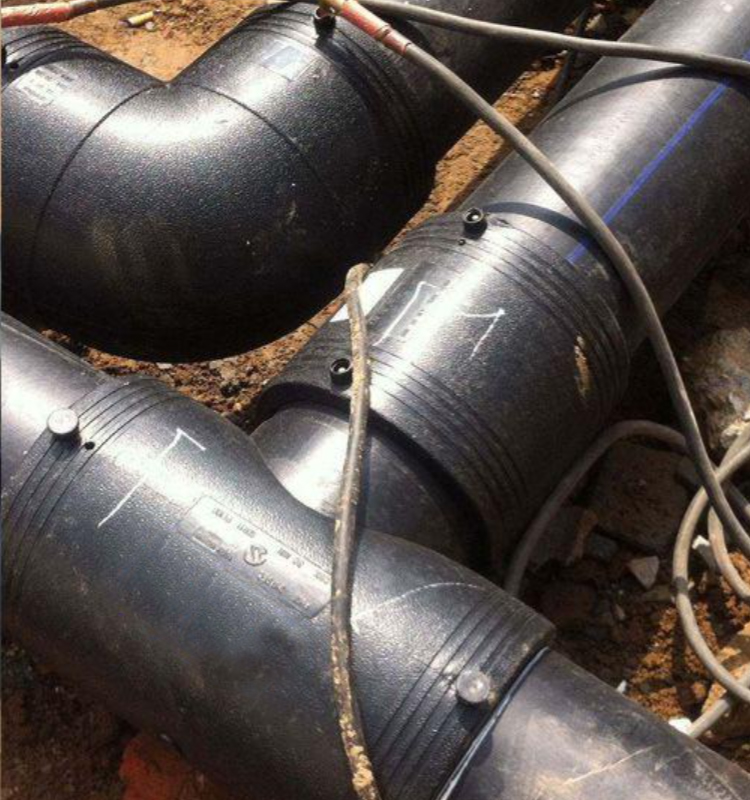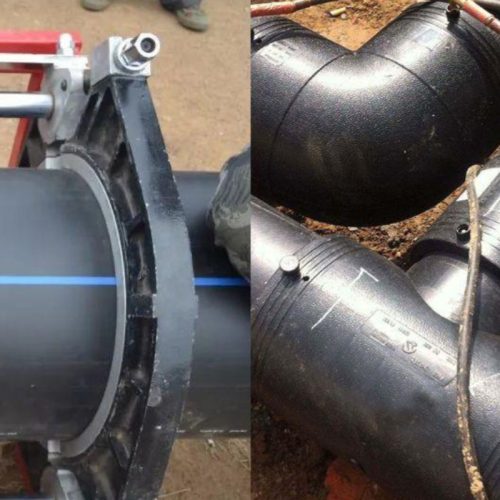HDPE pipe welding is crucial in many industries. It ensures strong, leak-proof connections in piping systems. Two main methods dominate this field: butt welding and electrofusion welding.
Butt welding involves heating and pressing pipe ends together. It’s ideal for large-diameter pipes and long runs. This method requires a butt fusion machine and skilled operators.
Electrofusion welding uses special fittings with built-in heating elements. It’s perfect for smaller pipes and complex installations. This method offers flexibility in tight spaces.
Choosing the right method depends on project needs. Understanding the differences between these techniques is essential for successful HDPE pipe welding.
What is HDPE Pipe Welding?
HDPE stands for High-Density Polyethylene. It’s a favored material for pipes due to its resilience and flexibility. HDPE pipe welding is a process of joining these pipes securely.

Welding HDPE pipes involves melting the surfaces of two pipe ends. The melted surfaces then fuse together, forming a solid, continuous joint. This technique ensures a durable and leak-proof connection.
There are two primary methods for HDPE pipe welding:
- Butt Welding: Ideal for large-diameter pipes and involves aligning and heating pipe ends.
- Electrofusion Welding: Utilizes fittings with heating elements for smaller pipes and complex layouts.
These methods require different equipment. Butt welding demands a butt welding machine, whereas electrofusion welding needs specialized fittings and control devices. Understanding the nuances of each method is crucial for selecting the appropriate technique for your project’s specific needs.
Overview of HDPE Welding Methods
HDPE welding is essential in many industries. Knowing the methods helps in choosing the right approach for specific projects. Two main methods are used to weld HDPE pipes.
Butt Welding and Electrofusion Welding are the primary methods. Each has unique advantages and equipment requirements. Their suitability depends largely on the project specifics, such as pipe diameter and site conditions.
Here’s a quick breakdown of these methods:
- Butt Welding: Suitable for large pipes, requires a butt fusion machine.
- Electrofusion Welding: Fits well for smaller pipes, uses specialized fittings and control boxes.
Selecting the proper method ensures effective, reliable joints in HDPE applications. Understanding these techniques is crucial for any project involving HDPE pipes.
Butt Welding: Process, Equipment, and Applications
Butt welding is a predominant method in HDPE pipe welding. It joins the ends of pipes by heating and then pressing them together. This approach is ideal for larger diameter pipes, offering a strong, durable connection.

The equipment required includes a butt fusion machine. This machine aligns and heats pipe ends. It usually comprises clamps, a heating plate, and a trimmer. Each component plays a vital role in creating a seamless joint.
Applications of butt welding are vast. It’s often used in water supply, gas distribution, and industrial systems. Projects involving long, straight runs of pipe benefit most from this method.
Butt welding is less suitable for small pipes. It also demands a clean environment to ensure the joint’s integrity. Skilled operators must handle the equipment with precision, as alignment and timing are critical.
When conditions are right, butt welding offers a cost-effective solution. It reduces fitting costs on large projects, making it a preferred choice for extended pipelines. It’s not without challenges, though.
Limitations exist, such as difficulty with pipes of differing wall thickness. Yet, when implemented well, butt welding produces strong joints with minimal leakage risk. This reliability makes it a favored choice for large-scale installations.
Step-by-Step Butt Welding Process
- Preparation: Secure pipes in clamps on the butt fusion machine. Ensure proper alignment.
- Trimming: Use the trimmer to even the pipe ends. Clean the surfaces thoroughly to remove debris.
- Heating: Activate the heating plate. Apply it to the pipe ends until the material softens and melts.
- Fusion and Cooling: Once heated, remove the plate. Press the pipe ends together, keeping pressure until the joint cools.
This process requires precision. Each step must be meticulously followed to avoid defects. Operators should monitor the alignment closely throughout.
Advantages and Disadvantages of Butt Welding
Advantages:
- Strong, permanent joints
- Cost-effective for large projects
- Suitable for high-pressure applications
Disadvantages:
- Requires skilled operators
- Not ideal for small pipes
- Needs precise alignment
Butt welding’s strengths lie in its durability and cost savings for large pipelines. However, the need for expertise and specific conditions can limit its application.
Electrofusion Welding: Process, Equipment, and Applications
Electrofusion welding is a versatile method in HDPE pipe welding. It uses specialized fittings with embedded electrical coils. When current passes, these coils melt the pipe surface to create a joint.
This approach excels in small-diameter pipes and complex installations. Electrofusion equipment includes fittings and a control box. The control box regulates electrical current, crucial for the process.
Ideal for confined spaces, electrofusion welds offer flexibility. It’s particularly useful in urban settings or when retrofitting systems. Repairs and connections in tricky spots become manageable.
Electrofusion stands out where butt welding can’t suffice. Pipes with varying wall thicknesses work well with this method. The fitting design accommodates discrepancies in pipe alignment.
However, cost can be a factor. Fittings are typically more expensive than those needed for butt welding. Despite this, the adaptability of electrofusion often outweighs the costs in suitable projects.
Industries that benefit include gas distribution and water supply systems. Electrofusion facilitates quick, effective repairs. In many cases, it’s the go-to method for intricate pipe networks.
Step-by-Step Electrofusion Welding Process
- Preparation: Clean pipe ends thoroughly. Mark insertion depth on the pipe.
- Fitting: Slide pipes into electrofusion fitting. Ensure pipe ends align with fitting indicators.
- Heating: Attach control box wires to fitting terminals. Initiate current according to the fitting’s instructions.
- Cooling: Once fusion completes, allow joint to cool undisturbed. Follow manufacturer’s guidelines for cooling times.
Attention to detail is vital during each step. From cleaning to cooling, precision ensures joint success. Monitoring throughout is crucial for effective welds.
Advantages and Disadvantages of Electrofusion Welding
Advantages:
- Versatile, even in confined spaces
- Suitable for small pipes and repairs
- Easy to manage alignment variances
Disadvantages:
- Higher fitting costs
- Requires a power source for the control box
- Can be susceptible to root penetration if poorly installed
Electrofusion’s adaptability makes it ideal for challenging environments. While fittings add to costs, the method’s flexibility and precision offer significant benefits in complex scenarios.
Butt Welding vs Electrofusion Welding: Key Differences
When comparing butt welding and electrofusion welding, several differences emerge. These methods cater to different needs and pipe scenarios.
Butt welding often suits large, straight pipe runs. It’s efficient for consistent pipe sizes. This method results in smooth, continuous joints without visible fittings.
In contrast, electrofusion welding excels in complex installations. It accommodates varying pipe diameters and is effective in tight spaces. The fittings remain visible post-installation, which can impact aesthetics.
Key Differences:
- Pipe Size: Butt welding is better for larger diameters; electrofusion is best for smaller pipes.
- Flexibility: Electrofusion is more adaptable to varying pipe specifications.
- Cost: Butt welding offers cost efficiency on large projects. Electrofusion, though expensive, is ideal for specific challenges.
Choosing between these methods depends on project requirements. Consider pipe size, installation environment, and budget constraints. Each method brings distinct advantages that can impact your piping project success.
Choosing the Right HDPE Welding Method
Selecting the correct HDPE welding method hinges on several project-specific factors. Evaluating these aspects ensures optimal results and efficiency.
Consider the pipe size and the environment of the installation site. Large, straightforward pipe sections often benefit from butt welding, while intricate layouts favor electrofusion.
Examine the project’s budgetary constraints as well. While butt welding might initially appear economical, its space and alignment demands could elevate costs.
Consider the following factors:
- Pipe Configuration: Evaluate complexity and layout.
- Budget: Assess cost implications.
- Environment: Analyze space and accessibility.
By weighing these elements, you can make an informed decision. Tailoring your approach to these considerations will lead to a successful and efficient welding process.
Common Mistakes and Best Practices in HDPE Pipe Welding
Mistakes in HDPE pipe welding can lead to joint failures. Avoiding these errors starts with understanding the common pitfalls associated with the process.
A major issue is improper alignment. Misalignment can weaken joints, increasing leakage risks. Proper training and equipment are crucial to prevent this.
Ensuring cleanliness is vital, too. Dirt and debris can cause faulty connections. Regular inspection and maintenance of equipment help maintain quality.
Best Practices:
- Training: Educate operators.
- Cleanliness: Keep surfaces dirt-free.
- Inspection: Regularly check equipment.
Adhering to these best practices ensures high-quality, durable joints, enhancing the longevity and performance of HDPE piping systems.
Conclusion: Which Method is Best for Your Project?
Choosing between HDPE butt welding and electrofusion welding depends on several factors. Project type, pipe size, and installation environment are crucial considerations.
Butt welding suits large projects with straight, long pipes. It’s cost-effective and reliable for high-pressure systems. Electrofusion welding offers flexibility for complex networks and repairs, thriving in tight spaces and varying pipe sizes. Ultimately, assess specific project needs to determine the ideal method.









